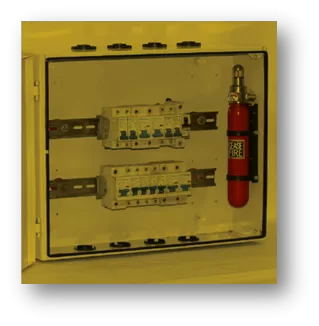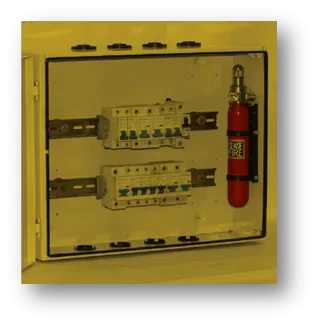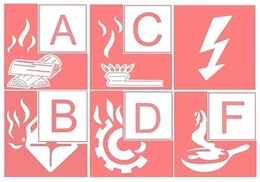Blogs
PCSBBA-0002
Automatic Fire Extinguishers - Portable Solutions
In today’s fast-paced world, safety must be a top priority. Fires, though often preventable, can cause immense damage to life and property. The evolution of fire safety technology has brought us innovative solutions like automatic fire extinguishers and Portable fire fighting products, which make protecting homes, offices, and industrial spaces more efficient than ever before.
What Is an Automatic Fire Extinguisher?
An automatic fire extinguisher is a self-activating device that detects and suppresses fire without the need for human intervention. Equipped with advanced sensors or temperature-sensitive mechanisms, these extinguishers release their extinguishing agent the moment a fire is detected. This ensures rapid response to a fire outbreak, minimizing damage and preventing escalation.

How It Works
- Fire Detection: Automatic fire extinguishers often use temperature-sensitive components, such as a glass bulb or fusible link, which activate when exposed to a certain level of heat.
- Agent Discharge: Upon activation, the extinguisher releases the extinguishing agent—be it dry chemical powder, clean agents, foam, or CO2—to suppress the fire.
- Coverage: Automatic fire extinguishers can be installed in areas that contain highly flammable materials with little or no human traffic.
Portable Fire Extinguishers: Big Protection in Small Packages
Not every fire risk demands a large extinguisher. Portable fire extinguishers are compact, lightweight, and portable devices designed for quick and easy use during smaller fire incidents. Despite their size, these products pack a punch, delivering effective suppression power when needed most.
Why Choose Portable Extinguishers?
- Portability: Easily stored in MCBs, servers or fuse box, these extinguishers are accessible during emergencies.
- Ease of Use: Designed with simplicity in mind, they can be operated by anyone without specialized training.
- Cost-Effective: Affordable and practical, they are a great addition to your safety arsenal.
Applications of Automatic and Portable Fire Extinguishers
- Homes: Protect kitchens, garages, and bedrooms from potential fire hazards. Automatic extinguishers can be installed near appliances prone to overheating.
- Vehicles: Automobiles, boats, and RVs are susceptible to engine fires. Compact extinguishers are perfect for this purpose, while automatic systems are ideal for high-risk areas.
- Offices: Safeguard sensitive equipment like computers and electrical panels with automatic and portable extinguishers.
- Industrial Spaces: Automatic extinguishers are critical in factories, warehouses, and machine rooms where fire risks are high.
Benefits of Automatic or Portable Fire Extinguishers
- Hands-Free Operation: No need for human intervention, ensuring safety even when no one is present.
- Rapid Response: Reduces fire spread by detecting and acting at the earliest stages.
- Versatility: Can be used in various environments, from homes to industries.
Environmental Considerations
Modern extinguishers prioritize safety not just for people but also for the planet. Clean agents and eco-friendly suppression methods ensure minimal environmental impact while effectively tackling fires. These advancements align with global efforts to create sustainable and responsible safety solutions.
Fire safety is no longer limited to traditional fire extinguishers. Automatic fire extinguishers and Portable firefighting products represent the next step in proactive and efficient fire protection. Compact, smart, and reliable, these tools offer peace of mind and unparalleled protection in a variety of scenarios.
Whether safeguarding your home, office, or vehicle, investing in modern fire safety equipment is a small step that can make a big difference. As the adage goes, “Prevention is better than cure”—and with these innovations, we’re better equipped than ever to prevent fire-related tragedies.


